How the pipeline CPU executes
multiple instructions
Clock cycle 1:
The IF stage
fetches the
1st instruction
into the IR(ID) register
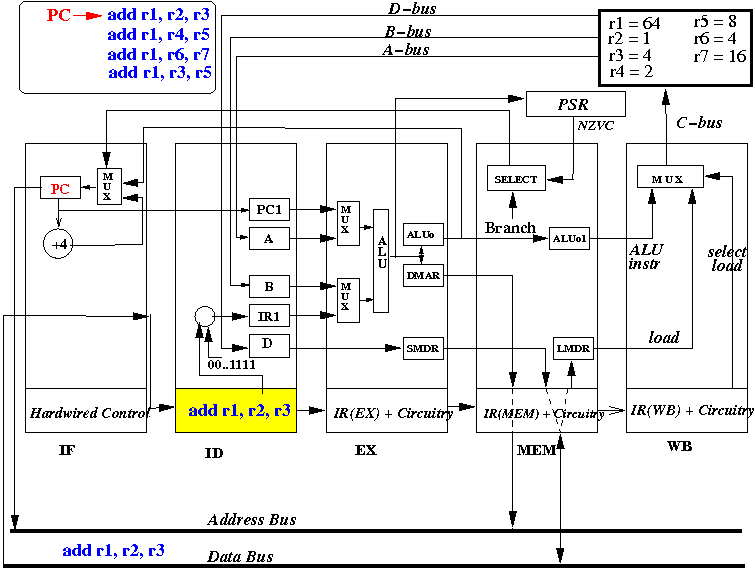
Watch
carefully at
the
operation performed
by each
individual stage !!
(It's exactly like before)
How the pipeline CPU executes
multiple instructions
Start 2:
ID stage
fetches
all possible
source
operands,
IF stage
fetches
the next instruction
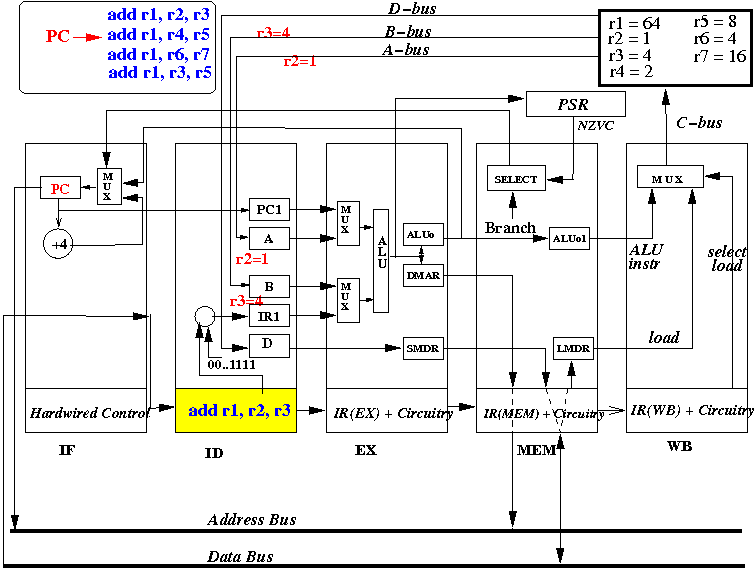
How the pipeline CPU executes
multiple instructions
End 2:
all source operands
for
add r1,r2,r3 are
fetched and
next instruction
fetched
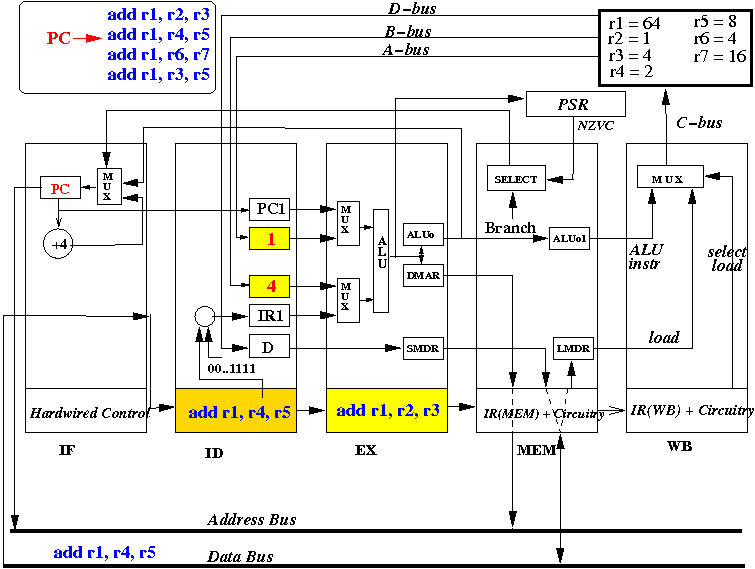
Notice:
the instruction
add r1,r2,r3 is moved
into the IR(EX) register
How the pipeline CPU executes
multiple instructions
Start 3:
EX stage
operates,
ID stage
fetches ops,
IF stage
fetches instr
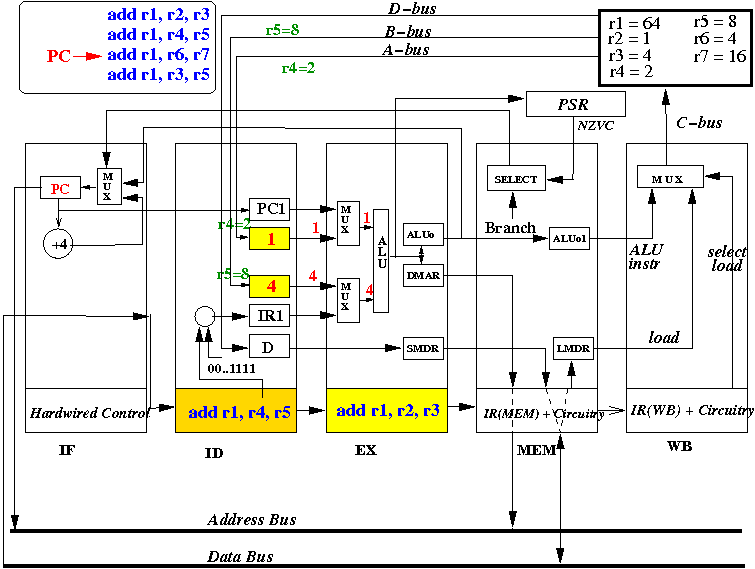
How the pipeline CPU executes
multiple instructions
End 3:
results in
all stages are
stored away
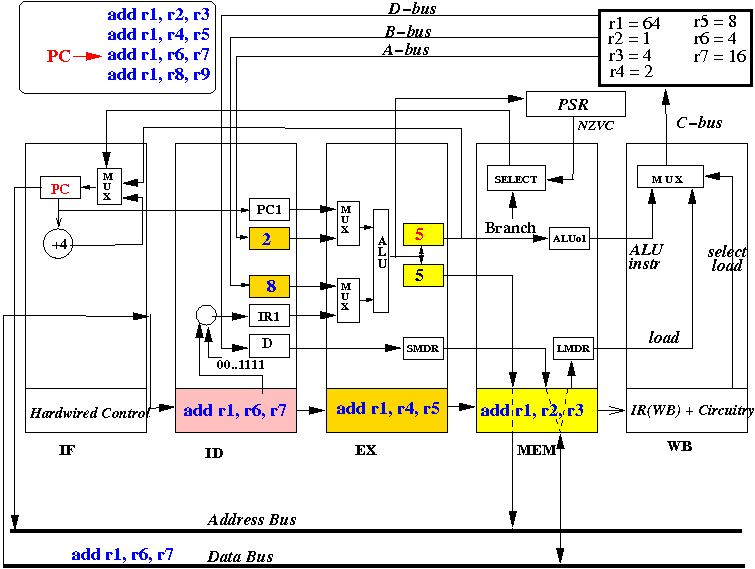
Notice:
all instructions are moved
forward
How the pipeline CPU executes
multiple instructions
Start 4:
MEM:
forwards,
EX:
operates,
ID stage
fetches ops,
IF stage
fetches instr

How the pipeline CPU executes
multiple instructions
End 4:
results
in all stages
are stored away
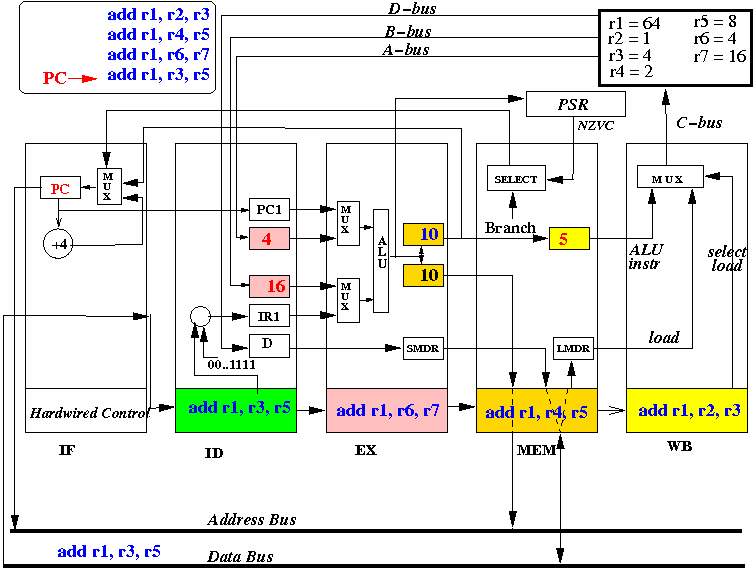
Notice:
all instructions
are moved forward
How the pipeline CPU executes
multiple instructions
Start 5:
WB:
update R1,
MEM:
forwards,
EX:
operates,
ID:
fetches ops,
IF:
fetches instr
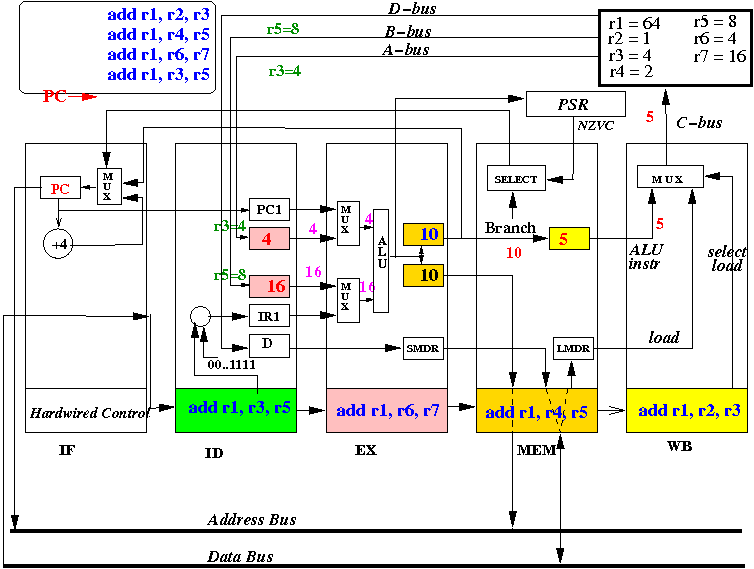
How the pipeline CPU executes
multiple instructions
End 5:
results
in all stages
are stored away
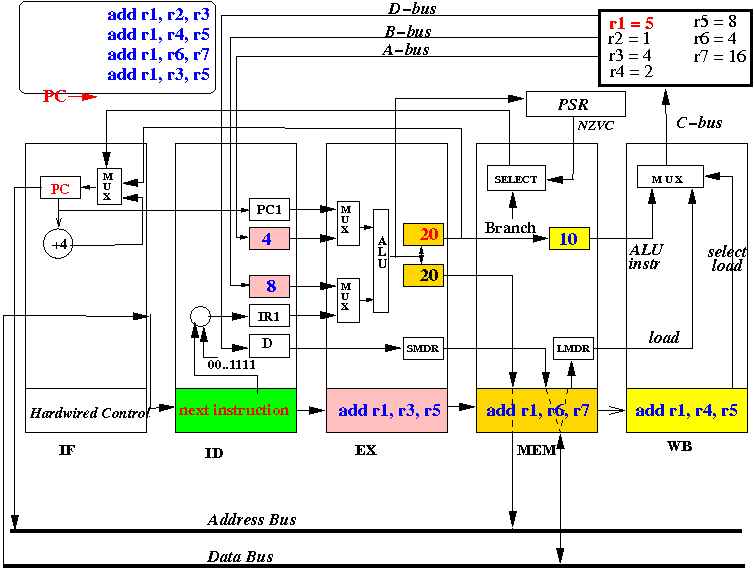
Notice
the significant
speed up !!!
DEMO (using Aaron's pipelined CPU)
- Execute this
command on
a lab machine:
/home/cs355001/demo/pipeline/1c-ALU-speedup
|
Program being
executed:
10 65 // mov r1, #65 R1 = 00000000 01000001
18 4 // mov r2, #4 R2 = 00000000 00000100
26 24 // mov r3, #24 R3 = 00000000 00011000
34 2 // mov r4, #2 R4 = 00000000 00000010
42 8 // mov r5, #8 R5 = 00000000 00001000
58 3 // mov r7, #3 R7 = 00000000 00000011
0 0 // nop
0 0 // nop
0 0 // nop
0 0 // nop
0 0 // nop
8 19 // add r1,r2,r3 (R1=R2+R3)
8 37 // add r1,r4,r5 (R1=R4+R5)
8 55 // add r1,r6,r7 (R1=R6+R7)
|
|
❮
❯








